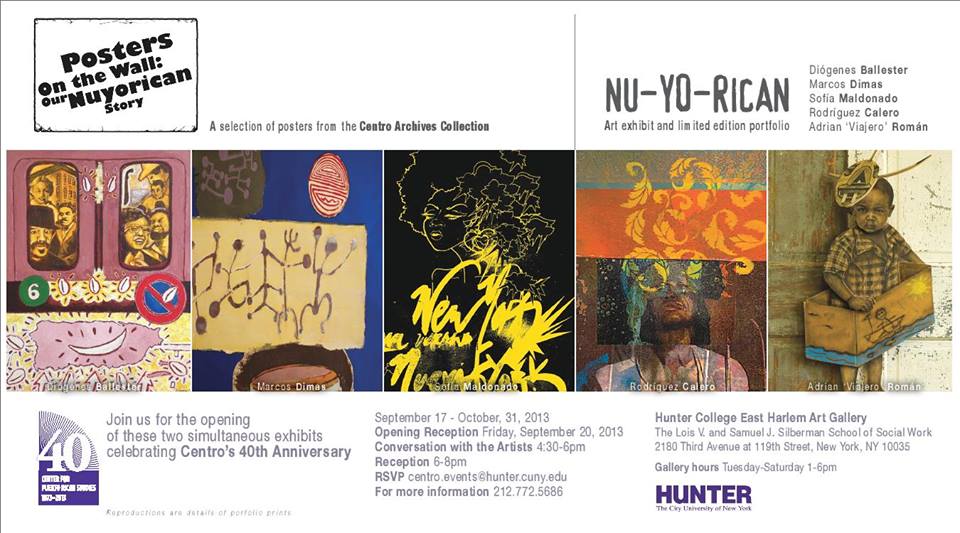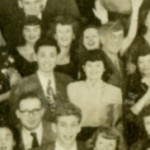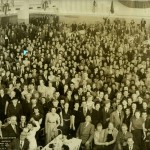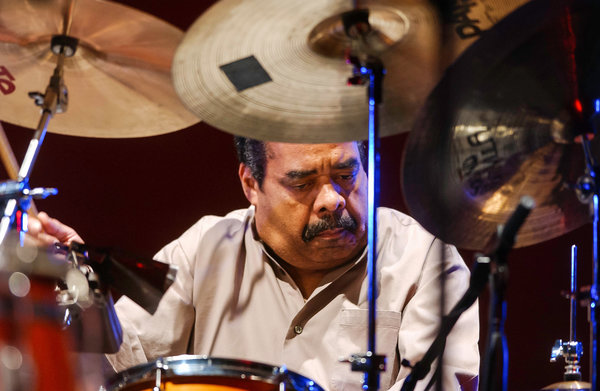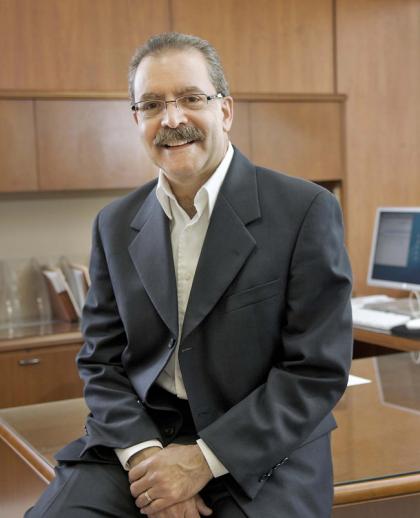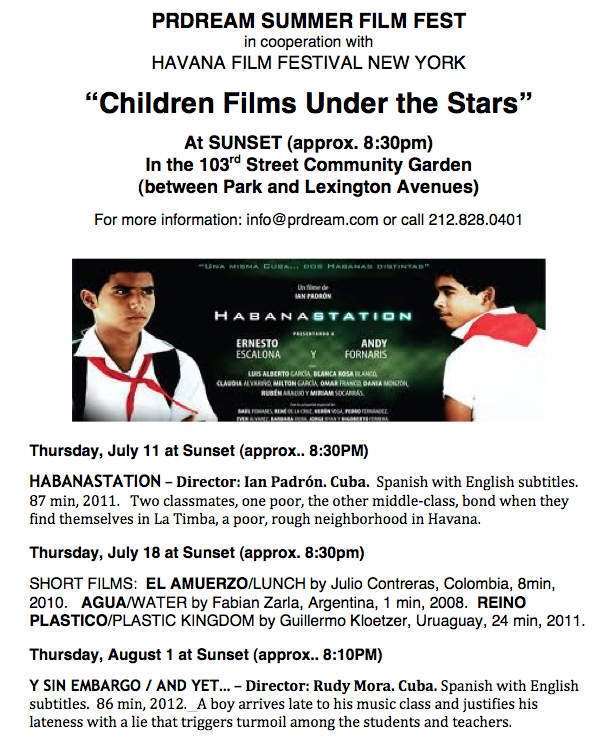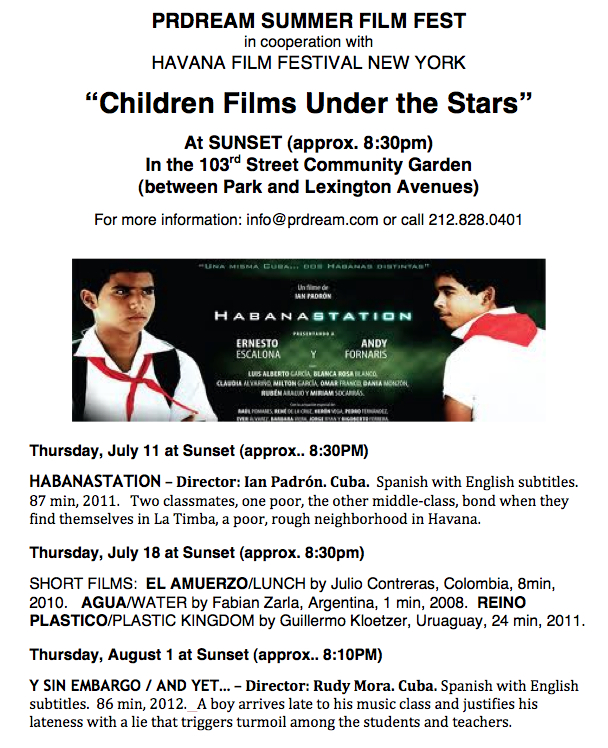LATINO AMERICANS — A new PBS documentary series in three parts
1949: Four years after the end of World War II. My parents had only recently met. Through dances and other socials like the Annual Armistice Ball, war veterans were finding their future wives and husbands and reintegrating into civilian life. People were celebrating all across the American Empire, from the Caribbean to the Pacific, Puerto Ricans among them. Having served in the American armed forces, they were returning to their families in Puerto Rico or New York, where they became part of the Great Migration.
My mother had established a foothold in New York after working to bring her own mother and most of her siblings stateside from Puerto Rico. In 1949 the first democratically elected Puerto Rican governor took office. Operation Bootstrap, aimed at industrializing the island, was only beginning. My mother Maria Antonia Torres was ready for a new life.
My father Mariano Virgilio Escalona had journeyed from the East after his father, an officer in the Philippine Army, was beheaded during the Japanese occupation of the Philippines. He sought new opportunities to help support his mother and siblings from afar. Filipinos have a term for those compatriots who go abroad and provide for their families — balikbayan. My father was a balikbayan when he met my mother.
The history of these times is written on the faces of my Puerto Rican family. Eight of us look Eurasian. My mother’s sisters, Titi Celia and Titi Julia (“titi” means “auntie”), also married Filipinos. People imagine we are related through our Asian side because of the way we look.
My mother and her two sisters jointly purchased a three-story row house on Bryant Avenue in the Bronx, each occupying a floor with her husband and children. We spent the first ten years of our lives together in what might be considered an early co-op. Our households exemplified Puerto Rican matriarchal rule, with our Filipino fathers usually away at sea. Uncles Sammy and Andy were lifers in the U.S. Navy and Coast Guard; my dad was in the U.S. Merchant Marines.
The Escalonas occupied the first floor with ready access to the porch and backyard. My brother and I spent a great deal of time playing outdoors. My mother was a strong believer in the health achieved by basking in the sun and breathing fresh air.
The Evangelistas lived on the second-floor. When not in church, my two cousins passed the time on their fire escape and on religious outings. Titi Celia had converted to the Pentecostal faith in the late fifties. My grandmother Uquita, our great matriarch, lived with them.
The Julatons moved into the third floor where the previous owner left an old upright piano. Titi Julia had been married before and brought her four Puerto Rican children to live with her and her four half-Filipino girls. Uncle Andy did not seem to mind. These older cousins sang Doowop and R&B. They played conga, guitar and piano. They taught their younger sisters to sing and dance to the latest Salsa, Soul, and Rock. I still remember the great fiestas Titi Julia threw during the holidays. The entire Torres clan would turn up.
Puerto Ricans thrived in New York. Many moved to the suburbs, others bought homes in Puerto Rico. Six of my aunts and uncles relocated to the island after retiring or saving enough to start a small business. My Uncles Gallardo and Eduardo owned barber shops in the Bronx and returned to Puerto Rico to open shops there.
The Julatons were the first to leave our co-op, returning to Puerto Rico in the late sixties as part of the reverse migration. I was too young to remember their sorrowful farewell, but old enough a decade later to suffer the departure of the Evangelistas. My mother bought her sisters’ shares and eventually lost the property to urban blight. We lived in what came to be known as Fort Apache. It almost cost my parents their lives.
Our neighborhood had been a mix of Jews, Italians, West Indians, African Americans, and ever-increasing Puerto Ricans. My best friend Fishy, Raymond Alvarez, was Puerto Rican and Cuban. He lived across the street from us. Fishy’s father emigrated from Cuba because of growing political unrest there. Most of the homes on our block were privately owned and our street was paved with red brick. Our family doctor made house calls and had his office in a beautifully appointed apartment building at the corner. This was our world before the city’s economic crisis devastated the Bronx.
How different we may have seemed to our neighbors is unclear because the neighborhood was diverse and our family formed its own little society or enclave. We seemed more Puerto Rican than Filipino though we looked Asian. We seemed more American than Puerto Rican because our education and most of our cultural references were American. We enjoyed hamburgers, hot dogs, and French fries. We savored meals with platanos maduros, bistec encebollado and arroz con habichuelas. We relished pork adobo, pansit, and ginger chicken soup. When our fathers were home, we feasted on foods from both sides of the empire and some American dishes too. Like New York cut steak, medium rare, with a dash of ketchup, accompanied by slices of buttered French bread, and washed down with ice-cold Seven-Up. A favorite dish of my dad’s and mine too—though today I rarely eat steak or drink soda.
Some of us still live in the Bronx, but all the Puerto Rican-Filipinos are gone. My parents eventually moved to Long Island. I wound up on Manhattan’s Upper West Side, going to college. My brother joined the service.
Many who first arrived from Puerto Rico have passed away but not before seeing an increasingly diverse generation of Puerto Rican-Filipinos. My niece and five nephews are Puerto Rican-Filipino and Polish. Most are married and have their own children, adding Mexican and Chinese to the Puerto Rican mix. The history of these times is written on their faces too.
CHECK OUT THE BLOG AND KEEP AN EYE OUT FOR THE SERIES: http://www.pbs.org/latino-americans/en/blog/2013/08/29/History-Written-Faces/
PRdream mourns the passing of Steve Berrios, February 24, 1945 – July 26, 2013
A Latin Jazz great, master of Jazz and Salsa. Born and raised in NYC of Puerto Rican parents. From the NY Times: “Mr. Berrios was a fixture of the New York Latin jazz scene for 40 years, playing in groups led by Max Roach, Art Blakey, Dizzy Gillespie, Tito Puente and Grover Washington Jr.” Berrios is a founding member of the Fort Apache Band, the cutting-edge Latin jazz fusion ensemble led by Jerry Gonzalez.
Mr. Berrios grew up in Upper Manhattan with neighbors like Mr. Puente, Willie Bobo and Mongo Santamaria, all icons of Latin music and friends of his father, Steven Berrios, who was a professional drummer in dance bands.
In Berrios’ own words: “Most people look at the drummer as an ignorant timekeeper that doesn’t know anything about music or forms,” he said in the 2007 interview. “But a drummer has to be as intelligent as the horn players. He has to know the vernacular, the history of the music.” A horn player can take a break. A drummer never leaves. “We’re like royalty.”
InPROCESS is a new initiative of MediaNoche offering previously exhibiting artists the opportunity to showcase technology-based extensions to past exhibited work.
PEOPLE COLORS
Ji Sun Lee repurposes the technology she developed for an earlier show at MediaNoche, creating an app that allows users to generate their own color-coded images. As an adjunct to her previous exhibition, PEOPLE COLORS deconstructs QUOTIDIAN and serves as a self-reflective commentary on the artist’s process.
Two projections offer a “before and after” look at the work in different stages of development: Photographs of the artist, her family and friends are compiled into sequences that are highly personal chronologies, then codified into blocks of color. Similarly, a video wall displays images of the artist’s mother in interlacing sequences of photographs and code that track the passage of time.
There is deception in the simplicity and accessibility of the work. The photographs are mundane yet overwhelming by their sheer number. The visual overload is resolved in the code, the extracting of color data and its reconfiguration into an illusive art form that exceeds facile correspondences. As Lee has stated: “Recollecting and reconstituting them as visual code creates a meta-level of remembrance that is similar to information graphics but different in representing a micro view of personal data that leads to a macro view of an individual’s life.” In this case, the artist’s life.
Artist Bio
New media artist and interactive designer Ji Sun Lee studied Industrial Design at Sookmyung Women’s University and Interactive Telecommunications at New York University. She has worked for major technology companies in Korea as an engineer and IT consultant. Lee holds a Ph.D. in Visual Communication Design from Seoul National University and is working on projects of image visualization using Processing and other physical computing software. Ji Sun Lee is a professor in the Department of Visual Communication Design at Sookmyung Women’s University.
About MediaNoche
MediaNoche is the place where art, technology and community converge. We offer artists working in new media exhibition space and residencies in order to provoke a dialogue that blurs all lines of marginality and alterity. Unique among art and technology groups, MediaNoche is directly linked to the oldest Latino community of New York City, Spanish Harlem, and has showcased a roster of local and international new media artists.
MediaNoche is a project of PRdream.com and is supported in part with funding from the New York State Council of the Arts, the New York City Department of Cultural Affairs and private donors. Special thanks: Hugh Mandeville, Kenneth Bowler, Christopher Dascher, Joann Arroyo, Maria Catoni, Joe Falcon, Allistar Peters, Alex Mateo, Gus Rosado and Operation Fightback, Inc.
Friend us on Facebook: www.facebook.com/MediaNoche.us
Former Mars Czar Tapped To Lead NASA’s Mars Reboot
FROM SPACE NEWS (spacenews.com)
By Dan Leone | Mar. 5, 2012
Orlando Figueroa. Credit: NASA photo
HERNDON, Va. — NASA’s former director of solar system exploration, Orlando Figueroa, will lead a group tasked with planning the scaled-back robotic Mars mission the agency is pursuing after its withdrawal from an international campaign to return a Mars sample to Earth.
Figueroa, a one-time NASA Mars czar who left the agency in 2010 to become a consultant, will head the Mars Program Planning Group. In late March, the group will present NASA science chief John Grunsfeld with a concept for a $700 million Mars mission that melds science, technology and human spaceflight goals and launches in either 2018 or 2020.
Figueroa’s appointment was announced by Grunsfeld at a Feb. 27 meeting here of the Mars Exploration Program Analysis Group (MEPAG), a community forum for Mars scientists.
“Probably what Orlando’s team will come up with is something like the [Lunar Reconnaissance Orbiter] experience,” Grunsfeld said. That mission, which launched in 2009 to support NASA’s since-shelved ambitions to return astronauts to the Moon, was designed to map the Moon, take radiation measurements, search for traces of water ice, measure the temperature at and below the lunar surface, and perform a technology demonstration of a mini-radio-frequency instrument.
Figueroa said more details about NASA’s new Mars mission should be available at the 43rd Lunar and Planetary Science Conference, to be held March 23 near Houston. Figueroa’s team will make their final report public around August. NASA will spend about $30 million this year on planning for its revamped Mars mission, which is known in budget documents as Mars Next Generation.
NASA is restructuring its robotic exploration program after the White House’s 2013 budget request, released Feb. 13, proposed cutting the Mars exploration budget 40 percent to about $360 million. The cut, rumors of which surfaced late last year, sealed NASA’s withdrawal from the multimission ExoMars sample-return campaign with Europe and Russia. The first two missions in the international campaign remain scheduled for launch in 2016 and 2018.
Mars sample return was named the U.S. planetary science community’s highest-priority big-ticket mission in a NASA-sponsored 10-year plan, known as a decadal survey, that the National Research Council put out early last year.
According to the decadal survey, Mars exploration that does not further that end should only be conducted in the context of smaller, cheaper missions.
“This is the bottom line: New missions to Mars that lead directly to sample return have very high priority,” Steven Squyres, the Cornell University astronomy professor who chaired the most recent planetary science decadal survey, said Feb. 27 during the MEPAG meeting here.
Conversely, “new Mars missions that do not lead directly to sample return should be openly competed via the Discovery program,” Squyres said. NASA Discovery missions are cost-capped at $425 million.
“With sample return, they didn’t mince the words in the decadal survey,” Figueroa said, acknowledging that his group must design a mission that not only supports Mars sample return but also passes muster with the White House budget hawks who nixed NASA’s involvement in such a campaign because it would tie up too much funding for too long.
Asked whether he thought there was a credible sample-return alternative to the the collaborative, multiphase approach the White House just rejected, Figueroa hedged. “I think so,” he said. “But we’ll see.”
What form NASA’s next robotic mission to Mars takes has yet to be decided. Grunsfeld kept the door open for either an orbiter or a rover. Some scientists here, however, raised doubts that NASA could afford a rover capable of contributing to an eventual sample-return mission for $700 million.
NASA’s flagship Mars Science Laboratory, a car-sized, nuclear-powered rover now on its way to the red planet, is expected to cost $2.5 billion by the time it completes its two-year mission. It cost $1.8 billion to build and launch. The much smaller, solar-powered twin Mars Exploration Rovers Spirit and Opportunity, 174-kilogram crawlers that launched in 2003, cost about $800 million to build and launch. Factoring in the cost of extended operations, the price is closer to $1 billion each. Spirit went dark in May, but Opportunity remains operational.
Delaying a Mars Next Generation launch until 2020 would give Grunsfeld two more years over which to spread the mission’s development cost, but it would also mean a loss of 150 kilograms of payload due to the less-favorable relative positions of the Earth and Mars as they orbit the sun. Optimal Mars launch windows occur about 26 months apart, but not all such windows are created equal.
“The sweet spot is 2018,” Grunsfeld said. “2022 is considerably worse than that, 2024 is sort of back to the 2020 level.”
Meanwhile, after shirking on its commitment to partner with the European Space Agency (ESA) for ExoMars, NASA says it wants international partners to join its Mars Next Generation mission.
An ESA official at the MEPAG meeting said the U.S. agency would have to take the lead if it wanted to bring Europe on board with the project.
“I think this morning I heard that the door was open, but I didn’t hear a real invitation here,” said Rolf de Groot, head of the ESA robotic exploration coordination office. He added that ESA was “open to discuss any possibility on future cooperation.”
INFORMACION AL DESNUDO – Todos los sábados de 7:00 a 9:00 pm New York City
INFORMACION AL DESNUDO
http://www.informacionaldesnudo.com/
HOY SABADO 15 DE JUNIO, 2013
DEDICADO A ERNESTO “CHE” GUEVARA, AL MOVIMIENTO 14 DE JUNIO EN RD Y A TODOS LOS PADRES DEL MUNDO
DON`T MISS IT!! THIS SATURDAY JUNE 15, 2013
Colombia- Campo Elias Galiano
Dominican Republic- Dr. Arcelio Estevez-Luis Fernandez-
Puerto Rico- Edwin Chungo Molina
NO SE LO PIERDA HOY SÁBADO 15 de JUNIO, 2013
Colombia- Campo Elias Galiano
Republica Dominicana-Dr. Arcelio Estevez-Luis Fernandez
Puerto Rico-Edwin Chungo Molina
Todos los sábados de 7:00 a 9:00 pm New York City
Transmitido por la 89.3FMDigital.com
Radioazua.com; Radiobembanoticias.com
Teléfonos 718-210-3390 o al 718-569-0011
Emails: infoaldesnudo@gmail.com, informacionaldesnudo@gmail.com
Nuestra Misión
Programa Radial en vivo, que informa e interactúa con una comunidad global a través del análisis, la indagación de hechos, la opinión, la entrevista, y la descodificación de la información manipulada por los medios masivos de comunicación. Todos los sábados de 7:00 a 9:00 pm desde Nueva York, para el Mundo.
Las expresiones y opiniones son responsabilidad de sus autores…
Conducidos por Activistas comunitarios, comprometidos con la causa del pueblo con el objetivo de orientar en las necesidades de la comunidad.
Promos de denuncia junta central de la RD
7:00-cancion Paz para Colombia
7:05- Maria Luisa Nunez- Presentacion de invitados-mision y el colectivo
7:10- Maria Luisa Nenez- Entrevista a Campo Elias Galindo-Sobre Colombia: Negociaciones de Paz en la Habana, Cuba- VII-Cumbre Alinza del Pacifico y Relaciones entre Venezuela y Colombia
7:30- Leonardo Cabrera- Entrevista a Dr. Arcelio Estevez-Sobre la Gripe H1N1 en RD
7:50-Edwin Chungo Molina- Entrevistas desde Comerio, Puerto Rico
8:00-Maria Luisa Nunez- Entrevista a Luis Fernandez, joven encarcelado injustamente
8:10- Milagros Cancel- Trabajadores hacen gran Manifestacion de Protesta y debandan firma de Nuevos contratos ante Alcaldia NYC
